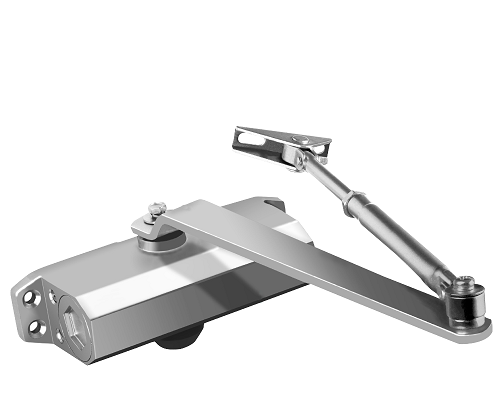Preventing door slam or door drift
Doors are often something of an afterthought when considering the aesthetics and functionality of a building, but they are an important feature in terms of how a building looks and operates. Doors can heavily impact on how a building flows and how efficient it is, and if there is a problem with how they operate it can have a big impact. Doors slamming shut or starting to drift can impact on health and safety in terms of fire risks and injury, while they can also impact on security, energy efficiency and accessibility.
In high traffic areas it is very important that doors are functioning properly, so preventing door slam and door drift is therefore an essential building maintenance task. But first let’s look at the problems at source.
What is door slamming and door drift?
Door slamming – This is where the closing speed of a door is excessive, or the latching speed of the door is not controlled. If a door is located in an area which is prone to draughts or wind tunnels then this can lead to doors slamming shut frequently. Maybe windows need repairing or are being kept open during summer, maybe also external doors are being propped open. This can lead to doors slamming shut or the closing speed being excessive. If a door slams shut it can cause a noise hazard, damage the door or surrounding plasterwork, and it can injure someone who is passing through the door.
Door drift – This is where a door opens or closes on its own and without any manual intervention. This could be caused by a misaligned frame or door hinges being loose, but most commonly is caused by the door not latching properly. Latching is the process in which the door is secured in the closed position at the end of its closing sweep cycle by a door latch, and is then kept in the closed position. If this doesn’t happen, even the slightest bit of breeze can open or close the door on a continual basis. This can be a noise nuisance but can also cause issues with health and safety and security.
What are the solutions to door slamming and door drift?
There are several quick solutions to door slamming which might prevent the worst effects of it, but don’t actually prevent the root cause of it. So people often install seals, felt pads or foam stops to cushion the impact of door slamming, which can prevent noise, damage and injury, and they can check and readjust the door hinges also. This may address the issue of door drift too, along with other adjustments to the physical structure of the door frame. But by far the most permanent and effective solution is to install a door closer. This will solve the root cause of the problem by ensuring the closing speed of the door is reduced and the latching action is controlled.
How a door closer prevents door slam and door drift
Installing an overhead door closer will automatically close a door once it has been opened. But it can also be set to close at a certain speed and latch properly in the closed position to fully secure the door and prevent it blowing open with a breeze, ie. it will prevent door drift.
An overhead door closer is a hydraulic unit that has valves to control the sweep speed and the latching speed. The sweep is the closing cycle from a fully open door at 90 degrees to around 12 degrees from the end of the closing cycle. The latching speed is this last 12 degrees. This ensures the final part of the closing cycle is slow and controlled and that the door rests in the fully closed position and is securely latched shut. The installer can adjust these valves by simply tightening or loosening a screw to find the balance they want in terms of sweep and latch speed. A slow closing speed can still result in a door slamming shut, because the latching speed is too fast, so it is important that careful minor adjustments are made to both the sweep and latching speeds to find the right balance.
When these adjustments have been made, a door should close at a speed that is suitable for the amount of traffic in a building and the type of people using the building. This cycle is usually about five seconds, but can be adjusted to whatever is suitable. But the important factor is that adjusting the sweep speed and the latching speed prevents the door from slamming shut, and ensures the door rests slowly in the closed position and effective latching is secured. This is then controlled for every opening and closing cycle of the door. The door closer is subject to wear and tear, so routine maintenance should be carried out to adjust these valve screws in the event that closing speed and latching is being affected.
Order your door closer online at MB Direct
At MB Direct we have a large range of door closers, including overhead door closers, so check out our range and order online today.